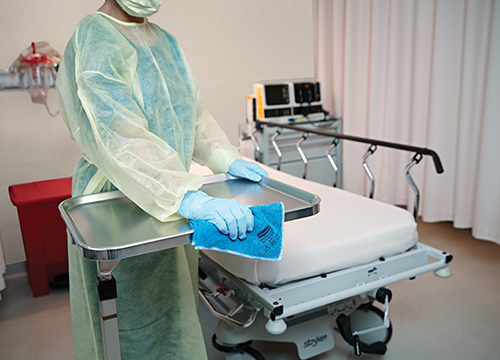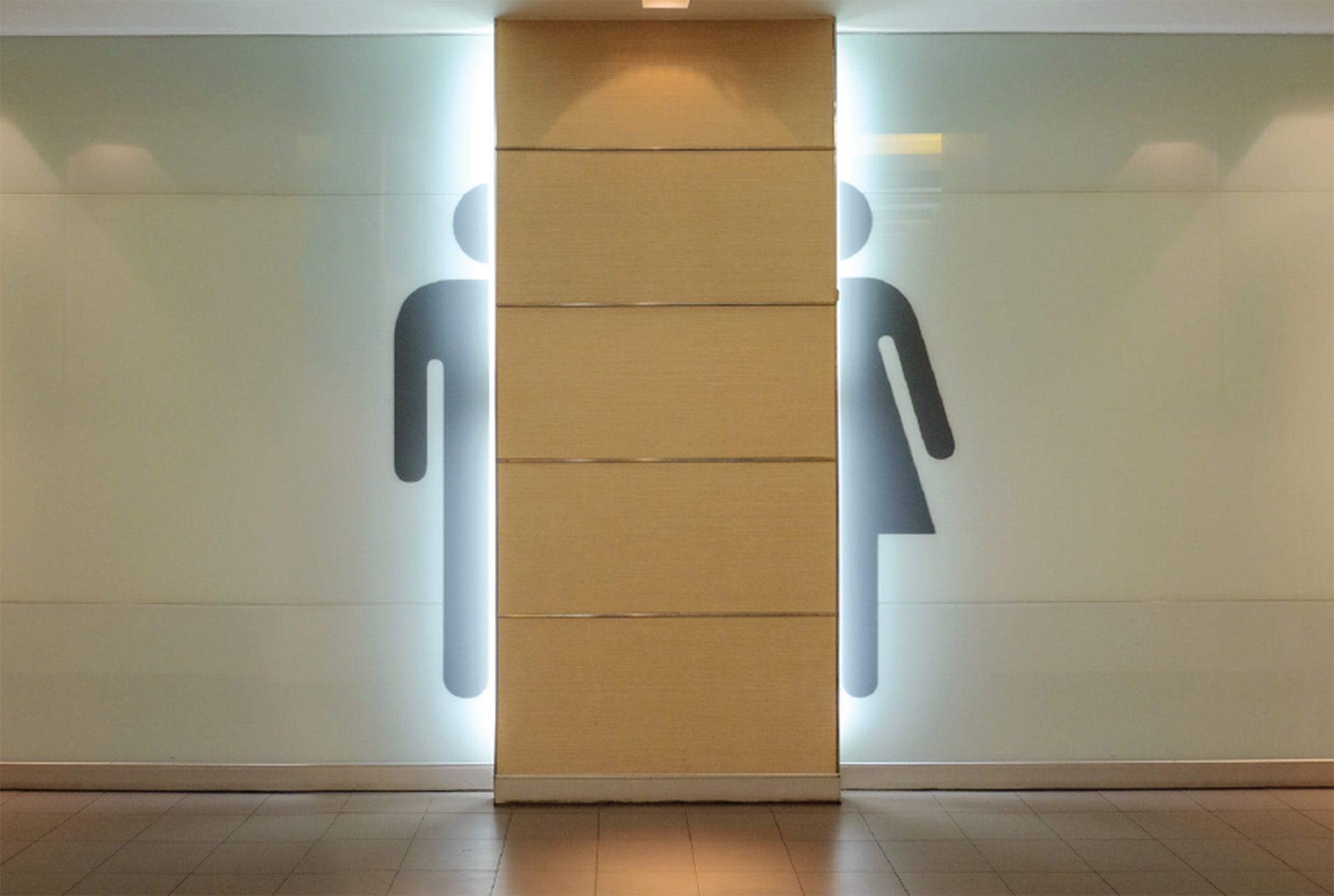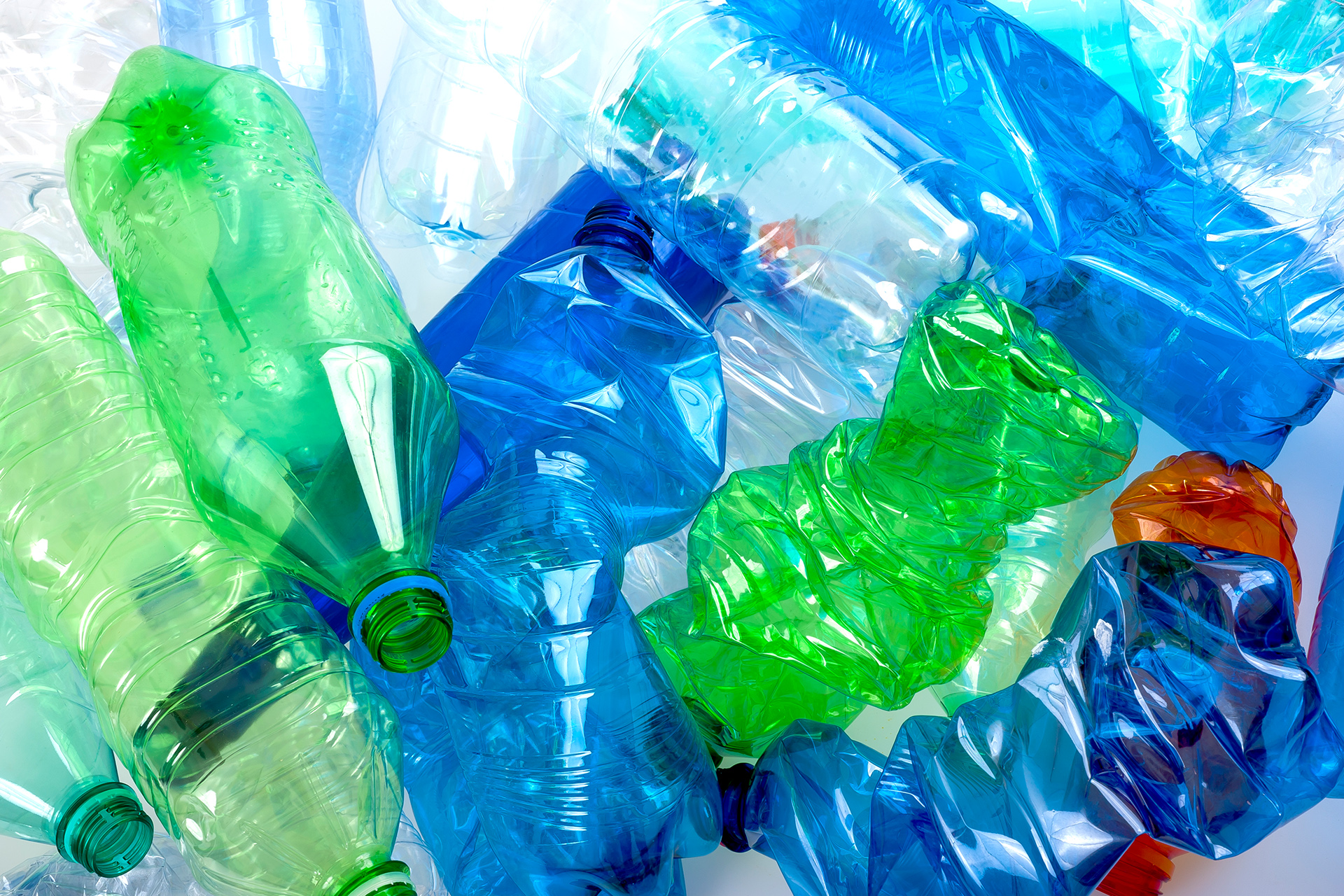Environmental cleaning is one of the most effective ways to maintain a safe and hygienic workplace in a healthcare setting. In hospitals and clinics, there is huge potential for contamination and the spread of illness due to how many patients pass through their doors every day in fact, approximately 1 in 10 patients who enter a hospital will contract a Healthcare Associated Infection (HAI) during their stay. Surfaces in common or high-traffic areas, like doorknobs, handles, and equipment, pose a particularly elevated risk when it comes to transmitting pathogens between patients, staff, and visitors.
Different types of bacteria can survive outside the body for varying lengths of time. As a rule of thumb, cold and flu viruses located on surfaces are infectious for 24 to 48 hours after being deposited and in a healthcare environment, that can be equivalent to hundreds if not thousands of people being exposed to said bacteria during that time frame. Factors that affect how long people can pick up the virus include how much of it was left on the surface, and the amount of humidity present in the surrounding environment (bacteria thrive in warm, humid areas).
Developing an effective environmental cleaning and hygiene approach will help you keep surfaces and common areas free of dangerous bacteria and reduce the spread of infection in the process. It’s also important to perform these cleaning and sanitizing routines consistently and thoroughly for best results.
Establishing priorities
To begin, it’s helpful to identify which surfaces and areas are most at risk of transmitting illnesses and bacteria between patients, staff, and others. Ask yourself the following questions to begin sorting different items and areas into high- and low-priority categories:
1. Is the surface high-touch (frequently comes into contact with people) or low-touch (rarely comes into contact with people)?
- High-touch surfaces, like patient-facing equipment, doorknobs, and washroom fixtures, will need to be disinfected more frequently due to an elevated risk of deposit and infection
2. What goes on inside the room in question, i.e. exam room versus meeting room
- Areas where patients are treated, waiting rooms, and reception areas will need to get more attention than rooms that receive less footfall
3. How vulnerable are the patients that occupy the space in question?
- Understandably, patients with compromised immune systems, elderly patients, and infants among other higher-risk individuals will need to have their environments cleaned at a higher-than-average rate
By answering these questions, you will be able to create a cleaning approach and schedule that prioritises areas at the highest risk of spreading infection
Best practices for specific pathogens
Not all bacteria and viruses are created equal; some require a specific sanitiser or disinfectant to be neutralized successfully. Here are a few pathogens commonly found in a hospital or clinic environment, and the best environmental cleaning agents to stop them from spreading.
- Norovirus: commonly known as “the flu,” many common disinfectants are ineffective against norovirus. Instead, a simple mixture of bleach and water (5 to 25 tablespoons of household bleach per 3.78 litres of water) is recommended.
- C. difficile: this pathogen cannot be killed using an alcohol solution. The use of soap and water is recommended (especially when it comes to washing hands, as this bacteria is spread via faeces particles), but a sporicidal agent is best.
- Staphylococcus aureus: this antibiotic-resistant pathogen, commonly known as “staph,” can survive on an external surface for weeks. Staph is best dealt with using a disinfectant or cleaning agent specifically formulated to kill this prolific bacteria.
Types of environmental cleaning

Maintaining a clean and hygienic environment is an effort that must be tackled from all angles. From patient-facing equipment to the main cafeteria, it’s important to be aware of the factors and activities that require specific attention.
Employees or cleaning staff dealing with any of the following situations should wear gloves and/or masks if necessary to further prevent the spread of pathogens, bacteria, and infections. Hands should also be washed after handling anything that may be associated with an infection risk.
- Medical equipment – Many of the items and equipment in exam rooms are used on multiple patients a day, so it is essential to make sure they are cleaned between uses. Blood pressure cuffs, stethoscopes, oximeters, and more must be sanitized or disinfected according to the manufacturer’s guidelines, but also the national and local infection control standards. It is your responsibility to remain fully up-to-date on these regulations to limit the spread of infection via commonly-used items.
- Spills – In a healthcare facility, spills are a fact of life, and those that contain blood or bodily fluids are especially dangerous to other people. Smaller spills in patient areas can be wiped up immediately then treated using the appropriate sanitiser(s), while larger ones should be contained, with a chlorine-based disinfectant being used as a final step on top of standard cleaning methods.
- Laundry and linen – All laundry that is collected from patients’ rooms must be treated with the same level of care, regardless of whether they have a known infection; as a rule of thumb, all used linens are considered to be contaminated for safety purposes. Heavily soiled sheets or gowns must be placed in a leak-proof bag prior to transport, while all other items must be dropped off in the appropriate area as-is.
- Kitchen and cafeteria – Many health care facilities have reusable plates and utensils in their cafeterias, and it is essential to properly disinfect these items after each use. When using a dishwasher, follow the manufacturer’s instructions for proper sanitising methods. In a three-compartment sink, the recommended approach is to wash with detergent, rinse with clean detergent, then disinfect using hot water or chlorine.
Know the basics to reduce the spread of infection
Asking the right questions and understanding the best environmental cleaning approaches for your situation are the bedrock of a hygienic environment. Given how quickly disease can spread through a hospital or clinic, it is everyone’s responsibility to contribute to the fight against infection.










